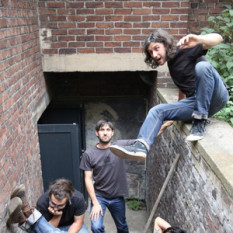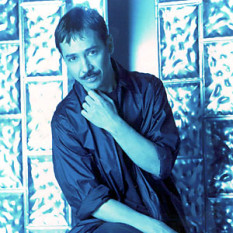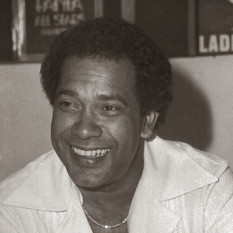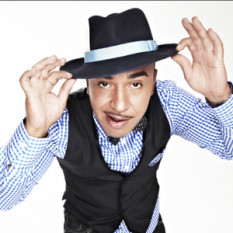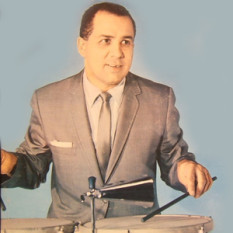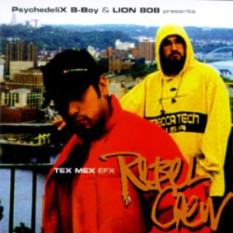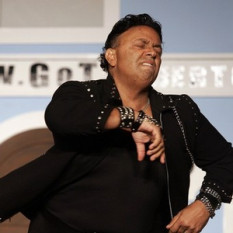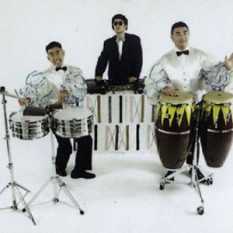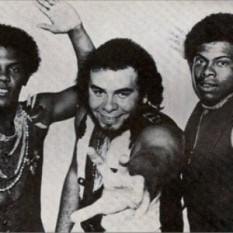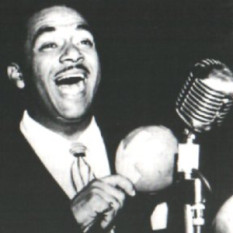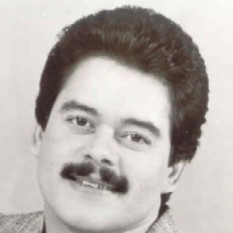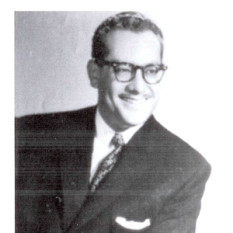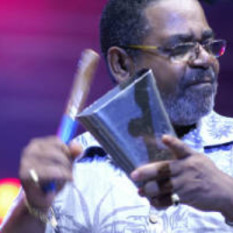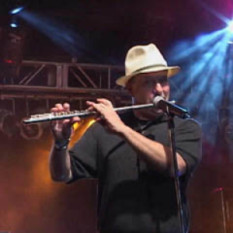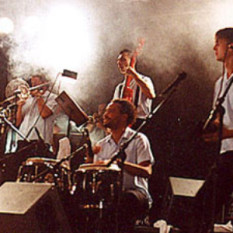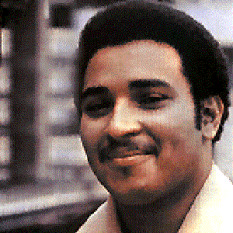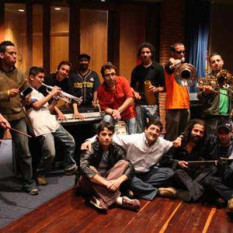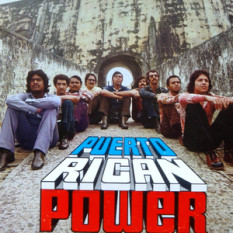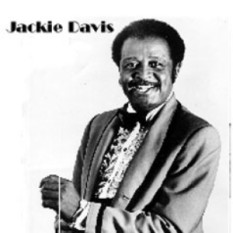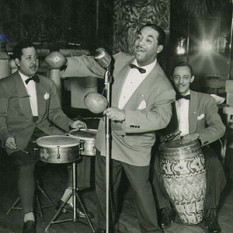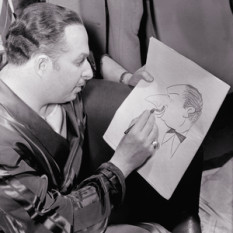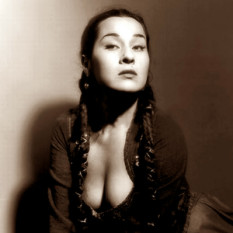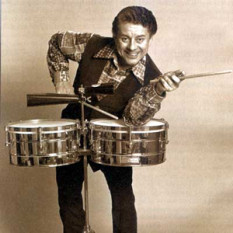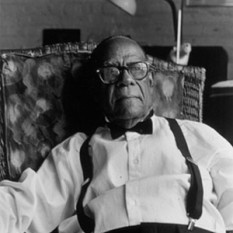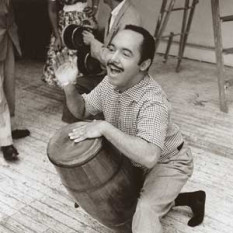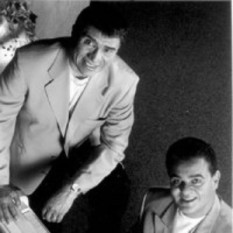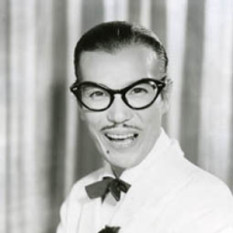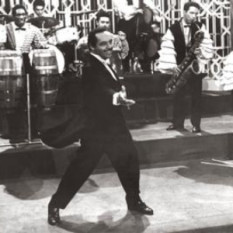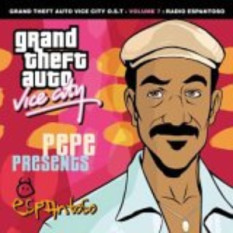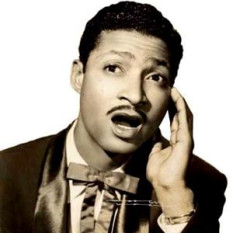Mambo is a Cuban musical form and dance style. The word mambo (which means conversation with the gods) is the name of a priestess in Haitian Voodoo. The name is derived from the language of the African slaves who were imported into the Caribbean.
History
The song Mambo
The history of modern mambo begins in 1938, when a danzón called "Mambo" was written by Orestes and Cachao López. The song was a danzón, descended from European social dances like the English country dance, French contredanse and Spanish contradanza, but it used rhythms derived from African folk music.
Contradanza and charanga
The contradanza had arrived in Cuba in the 18th century, where it became known as danza and grew very popular. The arrival of black Haitians later that century changed the face of contradanza, adding a syncopation called cinquillo (which is also found in another contradanza-derivative, Argentine tango).
By the end of the 19th century, contradanza had grown lively and energetic, unlike its European counterpart, and was then known as danzón. The 1877 song "Las alturas de Simpson" was one of many tunes that created a wave of popularity for danzón. One part of the danzón was a coda which became improvised overtime. The bands then were brass (orquestra tipica), but was followed by smaller groups called charangas.
The most influential charanga was that of Antonio Arcano, who flourished in the late 1930s. It was Arcano's cellist, Orestes Lopez, whose "Mambo" was the first modern song of the genre. His brother, bassist and composer Cachao López, is often described as "the inventor of the mambo".
Mambo dance
In 1943, a musician named Perez Prado came up with the dance for the Mambo music, the Mambo dance. He introduced it at La Tropicana night-club in Havana in 1943. He also became the first person to market his music as Mambo. After Havana, Prado moved his music to Mexico, and then New York City. Along the way, his style became increasingly homogenized in order to appeal to mainstream American listeners.
Following in the footsteps of Prado came a wave of mambo musicians, such as Enrique Jorrín. Some experimented with new techniques, such as faster beats and the use of side steps in the dance; this latter innovation formed the foundation of cha-cha-cha, and was the result of Jorrin's experimentation. Cha-cha-cha was very pop-oriented, especially after Arthur Murray further simplified the dance. Mambo remained popular throughout the United States and Cuba until the 1960s, when a combination of boogaloo and pachanga (both modified forms of mambo) were created.
New York Mambo dancers
Some of New York's biggest mambo dancers and bands of the 50s included:
Augie & Margo
Michael Terrace & Elita
Carmen Cruz & Gene Ortiz
Larry Selon Vera Rodriguez
Mambo Aces
Killer Joe Piro
Paulito and Lilon
Louie Maquina
Pedro Aguilar ("Cuban Pete")
Machito
Tito Puente
Tito Rodriguez
Jose Curbelo
Palladium and the Mambo mania
By the mid-1950s mambo mania had reached fever pitch. In New York the mambo was played in a high-strung, sophisticated way that had the Palladium Ballroom, the famous Broadway dance-hall, jumping. The Ballroom soon proclaimed itself the "temple of mambo," for the city's best dancers--the Mambo Aces, "Killer Joe" Piro, Augie and Margo Rodriguez, Paulito and Lilon, Louie Maquina and Pedro "Cuban Pete" Aguilar--gave mambo demonstrations there and made a reputation for their expressive use of arms, legs, head and hands. Augie and Margo became the highest paid dance duo in the world and still dance in Las Vegas 50 years later (2006).
Mambo bands
There was fierce rivalry between New York bands. The bands of: Machito; Tito Puente; Tito Rodriguez; and Jose Curbelo. They delighted habitués such as Duke Ellington,Bob Hope, Marlon Brando, Lena Horne and Afro-Cuban jazz pioneer Dizzy Gillespie. The shows were popular with Afro-Americans, Puerto Ricans, Cubans, Upper East Side WASPs, and Jews and Italians from Brooklyn. Class and color melted away in the incandescent rhythm of the music. Even jazz musicians such as Erroll Garner, Charlie Parker, Sonny Rollins and Sonny Stitt fell under the mambo's charm, as can be heard on the many Latin recordings they made in the 1950s.
Mambo losing popularity
In 1954 the cha-cha-cha, a kind of mambo created by the Cuban violinist Enrique Jorrín, a member of the Orquesta America Charanga, swept through Havana and New York. Easier to dance than the mambo, with a squarish beat and a characteristic hiccup on the third beat, it spread to Europe, before being dethroned in the early 1960s by the pachanga and then the boogaloo.
Return of the mambo
The 1990s saw a resurgence of mambo in popular culture. In 1992, the Warner Brothers hit film "The Mambo Kings", starring Armand Assante and Antonio Banderas, received numerous acting and music award nominations such as Oscar, Grammy, Golden Globe, and others. Music greats Tito Puente, Celia Cruz, and others appeared in the film, to the delight of music fans. The soundtrack received wide acclaim. The mambo revival continued in 1995 when Guinness used Perez Prado's track Guaglione in an advertising campaign featuring the dancing of Dublin actor Joe McKinney. The song was released as a single and reached number 2 in the UK charts. In 1999, Lou Bega released a cover version of Mambo No. 5, another Prado original, which became a hit across Europe.
.

